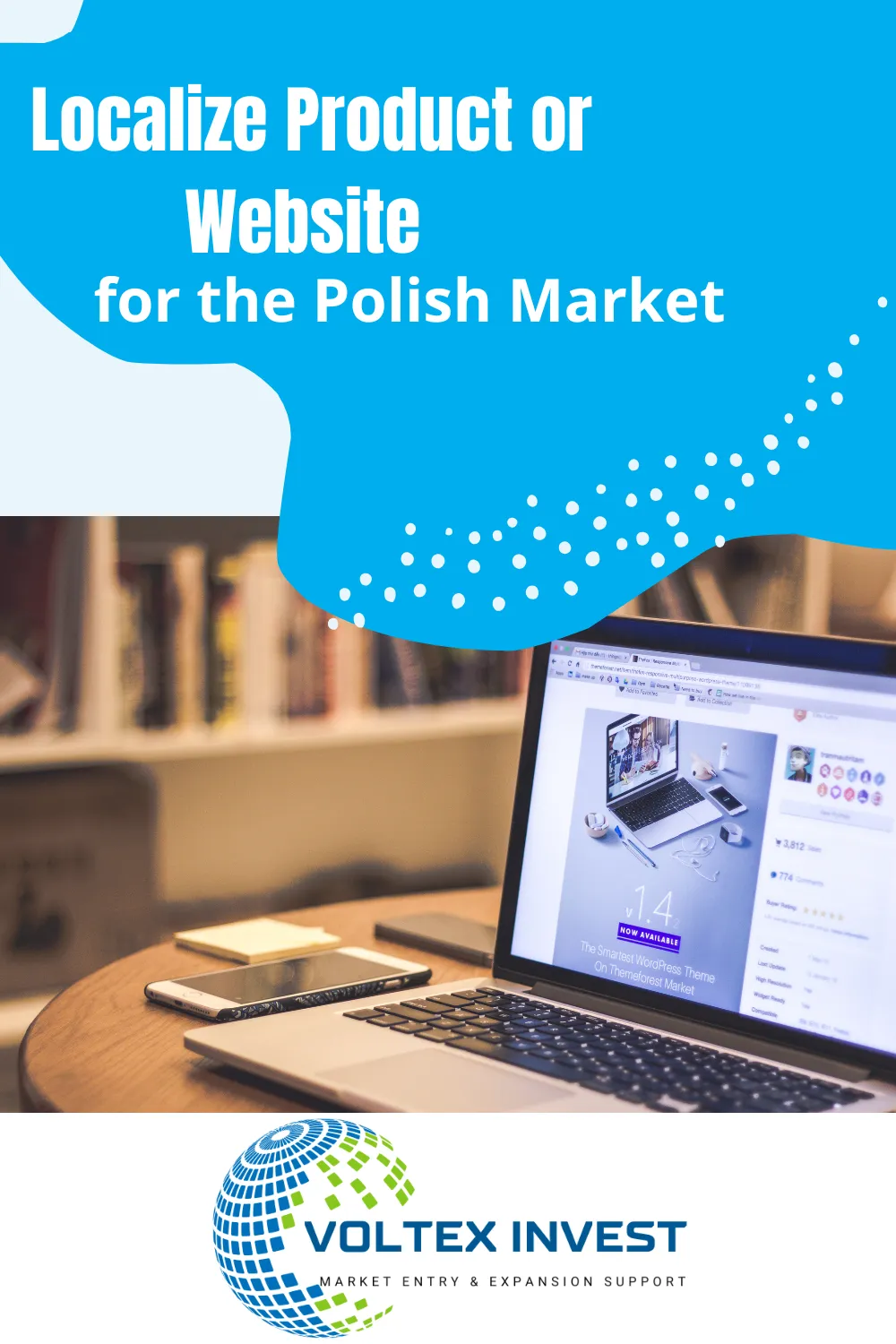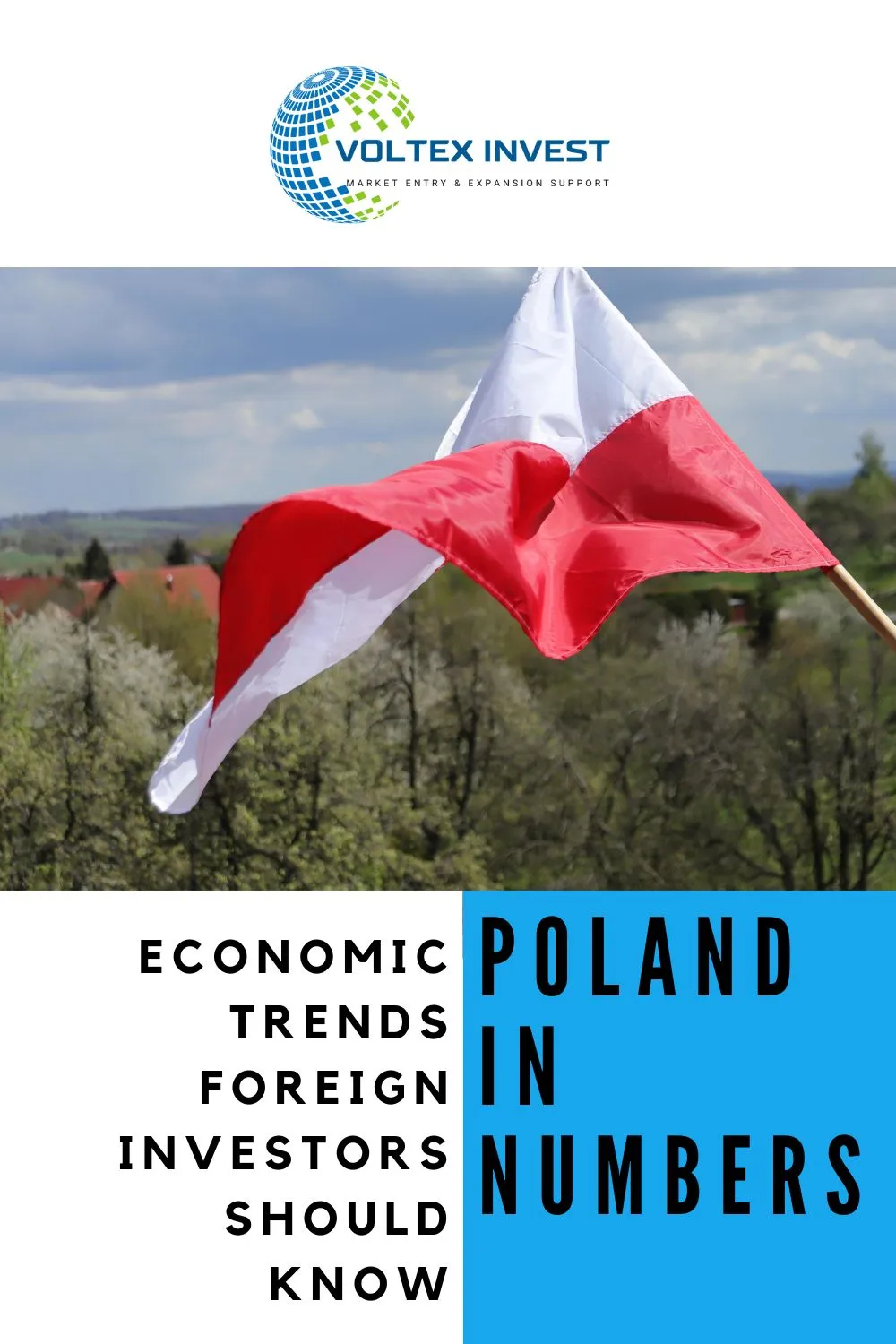
In 2025, Poland stands out as one of the most dynamic and digitally engaged markets in Europe. With over 38 million residents, high internet penetration, and a rapidly growing e-commerce sector, Poland presents significant opportunities for businesses looking to expand internationally. However, simply translating your content into Polish is not enough. To succeed, you need to localize — adapting your product, website, and marketing to the culture, language, and preferences of Polish consumers.
This guide provides expert insights on how to localize your product or website for the Polish market in 2025, practical tips to avoid common mistakes, and how companies like Voltex Invest can help you achieve a seamless market entry.
Localize Product or Website for the Polish Market

Understanding the Polish Market in 2025
Before you start localizing, you need a clear understanding of the market landscape:
- Digital Maturity: Over 92% of Poles use the internet daily, with mobile-first browsing dominating consumer behavior.
- E-commerce Growth: Poland’s e-commerce market is expected to surpass €35 billion in 2025, with sectors like electronics, fashion, and home improvement leading the way.
- Payment Preferences: Popular methods include BLIK (a Polish mobile payment system), PayU, Przelewy24, and traditional bank transfers.
- Consumer Values: Trust, clear product information, and fast delivery are top priorities. Poles are increasingly environmentally conscious and prefer brands that demonstrate authenticity.
Understanding these factors ensures that localization goes beyond language — it reflects real user expectations.
Translation vs. Localization: The Crucial Difference
Many companies make the mistake of thinking translation alone will work.
- Translation = converting text from one language to another.
- Localization = adapting the entire user experience — language, images, colors, layout, payment options, and even product offerings — to suit the target culture.
In Poland, for example:
- Product sizes may need to be expressed in metric units (centimeters, liters, kilograms).
- Humor, idioms, and cultural references need to resonate with local sensibilities.
- Certain colors and symbols can carry different cultural meanings than in your home market.
Key Steps to Localizing for the Polish Market
Conduct In-Depth Market Research
Understand who your ideal Polish customer is. This involves:
- Demographic segmentation: Age, location, income level.
- Behavioral data: How they shop, what devices they use, and what influences purchasing decisions.
- Competitor analysis: Study local competitors and global brands that successfully adapted.
Polish Language Optimization
Polish is a highly inflected language with complex grammar rules. This means:
- Your website’s UX copy must sound natural to native speakers.
- Use professional translators specialized in your industry.
- Avoid literal translations of slogans; adapt them for emotional and cultural resonance.
Local SEO for Poland
Poles search differently than English speakers. For example:
- English keyword: “cheap flights”
- Polish equivalent: “tanie loty”
Direct translation is not enough — you need keyword research using Polish tools like Senuto or SEMSTORM.
Also: - Register a .pl domain or create a dedicated Polish subdomain/subdirectory.
- Optimize meta titles, descriptions, and H1 tags in Polish.
- Build backlinks from reputable Polish websites.
Adapting Payment & Logistics
Poles expect familiar payment systems. Without them, your conversion rate will suffer.
- Offer BLIK, PayU, and Przelewy24.
- Partner with local courier services such as InPost, DPD Polska, or Poczta Polska.
- Display delivery times in working days and ensure your returns policy complies with EU and Polish regulations.
Visual & Cultural Adaptation
- Replace culturally specific images with Polish-relevant ones (e.g., Polish cities, local models).
- Adapt color schemes if necessary — for example, avoid using certain color combinations that might unintentionally resemble political symbols.
- Feature prices in PLN and include VAT.
Legal & Regulatory Compliance
Poland follows EU consumer law, but there are additional local requirements:
- Polish language must be used in product descriptions and contracts.
- Data processing must comply with GDPR and Poland’s specific data protection interpretations.
- Warranty and return policies must meet Polish standards.
Expert Tips for Success in 2025
- Mobile-First is Non-Negotiable — With over 80% of online shopping traffic coming from smartphones, ensure your website loads fast and is easy to navigate on mobile devices.
- Invest in Customer Support in Polish — Live chat or email support in Polish significantly increases trust and customer satisfaction.
- Leverage Local Social Media — While Facebook and Instagram remain popular, Allegro (Poland’s equivalent of eBay + Amazon) is a crucial e-commerce platform. TikTok is also rapidly gaining influence.
- Use Polish Holidays & Cultural Events — Running promotions around Andrzejki (St. Andrew’s Day), Majówka (May long weekend), or Black Week (Polish Black Friday equivalent) can boost engagement.
- Test and Iterate — Use A/B testing on Polish versions of your site to determine what design, wording, and offers convert best.
Common Mistakes to Avoid
- Literal translation of marketing copy — can make your brand look unprofessional or even offensive.
- Ignoring local payment systems — a quick way to lose sales.
- Not optimizing for Polish SEO — relying on English keywords in the Polish market rarely works.
- Failing to adapt product measurements — causing confusion for customers.
- Using non-localized customer service — leading to communication breakdowns.
How Voltex Invest Can Help You Localize for the Polish Market
Localizing for Poland is a multi-layered process — and this is where Voltex Invest comes in.
Voltex Invest specializes in comprehensive market adaptation for foreign businesses entering Poland. Their services go beyond translation, covering:
- Website and e-commerce localization: From Polish copywriting to UX adaptation.
- SEO and SEM campaigns in Polish: Optimized for search behavior and competitive keywords.
- Payment integration: Adding BLIK, PayU, and other Polish-preferred methods.
- Cultural adaptation consulting: Ensuring your visuals, slogans, and brand tone match local expectations.
- Legal compliance assistance: Helping you meet Polish and EU e-commerce regulations.
- Ongoing optimization: Tracking performance and making continuous improvements.
With a team of native Polish marketers, linguists, and UX designers, Voltex Invest bridges the gap between your brand and Polish consumers, making your market entry faster, smoother, and more profitable.
Final Thoughts
Poland in 2025 offers exceptional growth potential for international brands, but success requires a strategic localization approach. By:
- Understanding local consumer habits,
- Adapting your website and product for Polish culture and regulations,
- Optimizing for Polish search engines,
you can build a strong, trustworthy presence in the market.
Partnering with experienced local experts like Voltex Invest ensures that every aspect — from translation and SEO to payments and design — works seamlessly for Polish users.
In a competitive and fast-changing market, proper localization isn’t just an advantage — it’s a necessity.
Frequently Asked Questions (FAQ)
Why is localization important for the Polish market in 2025?
Localization ensures your product or website resonates with Polish consumers by adapting not only the language but also cultural nuances, payment systems, and legal requirements. This builds trust and boosts conversion rates.
Is translation enough to enter the Polish market?
No. Translation is only a small part of localization. You also need to adapt visuals, user experience, marketing messages, SEO, and even product measurements to meet Polish expectatio
What payment methods should I offer in Poland?
Popular options include BLIK, PayU, Przelewy24, and traditional bank transfers. These are essential to maximize sales.
How does SEO differ for the Polish market?
Polish consumers use different search terms than English speakers. Local keyword research and optimization for Polish search engines (like Google.pl) are critical for visibility.
How can Voltex Invest help with localization?
Voltex Invest provides full-service localization — from Polish copywriting and SEO to payment integration, cultural adaptation, and compliance with local regulations.













